How to Set Up Moving Head Lights for Small Venues
- How to Set Up Moving Head Lights for Small Venues
- Assess Your Venue and Event Goals with moving head dj lights
- Choose the Right moving head dj lights for a Small Venue
- Plan Rigging, Positioning, and Sightlines for moving head dj lights
- Rigging Safety and Load Calculations for moving head dj lights
- Power and Electrical Setup for moving head dj lights
- Data and Control: DMX, RDM, and Console Options for moving head dj lights
- Programming Practical Looks and Scenes with moving head dj lights
- DMX Addressing, Channel Mapping and Modes for moving head dj lights
- Troubleshooting Common Issues with moving head dj lights
- Maintenance and Care to Maximize Lifespan of moving head dj lights
- Why Choose LQE moving head dj lights for Small Venues
- Quick Setup Checklist for a Small Venue using moving head dj lights
- FAQ — Frequently Asked Questions about moving head dj lights
- Q: How many moving head dj lights do I need for a small stage?
- Q: Can I run moving head dj lights from a normal household outlet?
- Q: Do moving head dj lights require a special console?
- Q: Is it better to buy hybrids or separate beam and wash fixtures for a small venue?
- Q: How do I keep moving head dj lights from overheating?
- Contact Sales / See Products
- Sources
How to Set Up Moving Head Lights for Small Venues
Assess Your Venue and Event Goals with moving head dj lights
Before unpacking lights or climbing a ladder, define what you want to achieve with your moving head dj lights. Small venues (bars, small theaters, houses of worship, club rooms) typically have low ceilings, limited rigging points, and constrained power. Decide whether the primary goal is artist/performer wash, audience beam effects, eye candy for a DJ set, or cue-driven theatrical looks. Clear goals guide fixture type, quantity, mounting, and control strategy.
Choose the Right moving head dj lights for a Small Venue
Selecting the proper type of moving head dj lights is the most important decision. There are four common categories: beam, wash, profile (spot), and hybrid. Each has strengths and trade-offs for small venues.
Use the table below for a quick comparison — ranges are typical for modern LED fixtures and intended to help choice; check exact specs for any model before purchase.
| Type | Primary Use | Typical Output / LED Wattage | Typical Beam Angle | Best For Small Venues |
|---|---|---|---|---|
| Beam | Sharp, long shafts and aerial effects | 150–1000 W (single/source equivalent) | 1°–5° | Small clubs with low to medium ceilings for dramatic aerials |
| Wash | Evenly lighting performers and stage areas | 50–600 W (multiple LEDs) | 12°–60° (often variable lens) | Ideal for low ceilings and stage front lighting |
| Profile / Spot | Sharp-edged beams, gobos, focusable; theatrical work | 150–900 W | 6°–40° (focusable) | Theater-style small stages needing gobo and framing control |
| Hybrid | Combines beam, spot, and wash features in one fixture | 200–800 W | Variable | Good all-in-one option when rigging points are limited |
Note: data ranges are representative. Consult manufacturer datasheets for exact lumen, wattage, and beam details (see sources).
Plan Rigging, Positioning, and Sightlines for moving head dj lights
Small venues often lack permanent trusses. Plan positions that give you useful coverage while minimizing obstructions and glare for the audience. Key tips:
- Mount fixtures above eye level — typical aim is 2–3 meters above performers for stage wash; higher for audience beams if ceiling allows.
- Use corner truss positions to create cross-beams and avoid pointing fixtures directly at the audience at eye height.
- Where ceiling rigging is limited, consider portable stands or a lightweight truss. Ensure stands are rated for moving head loads and use a secondary safety (safety cable or bond).
- Account for pan/tilt travel: leave clearance for full movement and avoid nearby obstructions like speakers and HVAC vents.
Rigging Safety and Load Calculations for moving head dj lights
Safety is mandatory — moving head fixtures are heavy and dynamic forces come into play when they move. For small venues:
- Check the fixture weight and use hardware rated above that weight (e.g., a 2:1 or 5:1 safety factor is common for temporary rigs).
- Use proper clamps, bolts, and safety cables for each fixture. Never hang a fixture from a clamp alone — always use a safety cable attached to secondary point.
- If using truss, verify the truss load capacity and distribution. Don’t concentrate too much weight on a single rigging point.
- Use a certified rigger for overhead installations and keep ladders and work areas clear.
Power and Electrical Setup for moving head dj lights
Power planning prevents brownouts and flicker. Typical considerations:
- Estimate total power: add the maximum wattage for all fixtures plus a margin (20–30%) for control consoles, effects, and audio equipment.
- Divide fixtures across multiple circuits to balance load — avoid powering several high-wattage fixtures from a single domestic circuit.
- Use proper power distribution boxes with circuit breakers. Many moving head fixtures accept 100–240V AC; confirm the voltage range on the datasheet.
- Consider inrush current: many LED fixtures have high inrush, so allow for that when selecting breakers.
Typical power ranges (approximate): beam heads 300–1200W, wash heads 100–600W, hybrids 300–800W. Always confirm per-model specs.
Data and Control: DMX, RDM, and Console Options for moving head dj lights
For control, DMX512 is standard. Modern fixtures may also support RDM (Remote Device Management) for easier addressing and status reporting. Practical steps:
- Decide your controller: small venues can use compact hardware controllers or software on a laptop with an interface (USB DMX dongle). Larger setups benefit from a dedicated lighting console.
- Plan DMX addressing: keep channel maps organized. Use a spreadsheet or labeling to track addresses and modes (16/20/34/.. channels).
- Use DMX termination and good-quality cables. Avoid star topologies; daisy-chain the DMX line.
- Consider an opto-splitter or a DMX over Ethernet (sACN/Art-Net) node if you have multiple universes or run long cable distances.
Programming Practical Looks and Scenes with moving head dj lights
Keep programming simple for small venues — reliable, repeatable looks beat complex one-off routines. Workflow tips:
- Start with a baseline: create a three-scene sequence (Intro/Warm, Performance/Peak, Outro/Cool-down).
- Use presets for pan/tilt positions (e.g., stage left wash, center front spot, audience beam). Assign them to buttons for quick recall.
- Use color macros and gobos for variety without building new cues each show.
- For DJ shows, sync chases and strobe effects to music via tap-tempo or an audio trigger on your controller.
- When automated homing is needed, ensure fixtures complete their home routine before the show starts.
DMX Addressing, Channel Mapping and Modes for moving head dj lights
Understanding channels and modes avoids conflicts and wasted control capacity:
- Fixtures often have multiple channel modes (basic to advanced). For small venues, opt for a lower-channel mode if you have many fixtures and limited console channels.
- Assign addresses so groups of similar fixtures share contiguous address blocks — this simplifies group control and copying of presets.
- Label fixtures physically with their DMX start address and keep a printed map of addresses and physical positions.
Troubleshooting Common Issues with moving head dj lights
Common problems and quick fixes:
- No response: verify power, DMX cable continuity, termination, and start address. Check the console output status.
- Strobing or flicker: check for voltage drops, shared noisy circuits, or incompatible dimming on the same circuit. Move fixtures to different circuits if needed.
- Homing issues: ensure fixtures have uninterrupted power during home routines; noisy DMX lines can interfere with initialization — use RDM or a direct connection to test.
- Overheating and fan noise: ensure adequate air flow; clean dust from fans and heat sinks regularly.
Maintenance and Care to Maximize Lifespan of moving head dj lights
Routine care extends life and reduces downtime:
- Regularly clean lenses, gobos, and cooling fans with appropriate soft brushes, compressed air, or lens cloths.
- Check and tighten mechanical mounts and clamps before each event.
- Keep firmware up to date—manufacturers release updates to improve reliability and add features.
- Store fixtures in padded flight cases when not in use and avoid exposure to moisture and salts.
Why Choose LQE moving head dj lights for Small Venues
LQE was founded in 2008 and is headquartered in Foshan, China. We are a professional OEM/ODM stage lighting equipment manufacturer specializing in the R&D, production, and sales of middle- and high-end digital stage lighting. Our production base covers an area of about 10,000 square meters, has the ability to produce 100,000 lighting fixtures annually, and has 80 national patents. These facts translate into concrete advantages for small-venue operators:
- Consistent Supply & Capacity: A large production base and high annual capacity help ensure product availability and faster lead times for repeat customers.
- Engineering Depth: A focus on R&D and numerous patents support reliable, feature-rich fixtures that combine performance and efficiency.
- Range & Flexibility: LQE offers a broad product range including waterproof stage lighting, beam moving head light, moving head hybrid light, moving head wash light, moving head profile light, LED effect light, LED studio light, LED par light, and lighting accessories — allowing venues to standardize on a single trusted supplier.
- OEM/ODM Expertise: Customization options are available for brands and rental houses that need special colors, control modes, or physical fittings.
- Cost-effectiveness: LQE emphasizes delivering long-lasting lighting solutions at competitive prices — appealing to small venues that need reliability without excessive capital cost.
Core competitive strengths of LQE fixtures include robust mechanical design, efficient LED engines for lower power draw, clear documentation for DMX/RDM setup, and a range of waterproof models for outdoor applications. For small venues, LQE's hybrids and compact wash heads often provide the best balance of flexibility and bang-for-buck.
Quick Setup Checklist for a Small Venue using moving head dj lights
Use this checklist before showtime:
- Plan the fixture types and count based on goals (wash for performers, beams for aerial looks).
- Verify rigging points and load limits; attach safety cables.
- Balance power across circuits and check breaker sizes.
- Run DMX with correct addressing and termination; test each fixture from the console.
- Create 3–5 core scenes (intro, performance, peak, breakdown, outro).
- Do a full run-through to allow fixtures to home and test movement ranges.
- Run through emergency power or reboot procedures so the crew knows what to do if a fixture fails mid-show.
FAQ — Frequently Asked Questions about moving head dj lights
Q: How many moving head dj lights do I need for a small stage?
A: It depends on your goals. For basic wash coverage, 4–6 compact moving head wash lights will often suffice. For DJ-focused aerial effects, 4–8 beam units complemented by 2–4 wash lights is common. Balance quantity with mounting points and budget.
Q: Can I run moving head dj lights from a normal household outlet?
A: Many modern LED moving heads accept 100–240V and can technically run from a household outlet, but you must ensure the circuit can handle the combined inrush and continuous load. Distribute fixtures across multiple circuits where possible and use proper power distribution with breakers.
Q: Do moving head dj lights require a special console?
A: No — basic functions can be controlled with low-cost controllers or software with a USB-DMX interface. Dedicated consoles provide faster programming, faders, and more professional show control for complex cues or touring setups.
Q: Is it better to buy hybrids or separate beam and wash fixtures for a small venue?
A: Hybrids are space- and cost-efficient when rigging points are limited, because they offer wash, beam, and spot capabilities in one head. However, separate specialized fixtures can produce stronger, more optimized results for specific tasks (e.g., a high-output beam vs a compact wash).
Q: How do I keep moving head dj lights from overheating?
A: Ensure good air circulation, keep vents dust-free, avoid overcrowding in cases, and operate fixtures within their specified ambient temperature range. If fixtures run hot regularly, reconsider placement or reduce ventilation obstructions.
Contact Sales / See Products
If you want reliable, cost-effective moving head dj lights, LQE offers a wide selection suited to small venues, rental houses, and clubs. Contact our sales team to discuss small-venue packages, customization, or trial units. For immediate inquiries, email sales@lqe-lighting.com (or use your preferred contact form) and request product catalogs or a quote for: Waterproof stage lighting, beam moving head light, Moving head hybrid light, Moving head wash light, moving head profile light, LED effect light, LED studio light, LED par light, and lighting accessories.
Sources
- Manufacturer product specifications and datasheets (Martin by HARMAN, Chauvet Professional, ETC) — used to determine typical power and beam ranges.
- Lighting industry reference material and product testing guides (LEDs Magazine, professional lighting equipment manuals).
- LQE internal product and manufacturing data (company founding and production capacity figures provided by LQE corporate information).
How to Choose the par lighting for stage manufacturer and supplier in us?
Wholesale led spot moving head light manufacturer and supplier
The latest trends for vintage fresnel light | LQE Ultimate Insights
How to Choose the led bar stage lights manufacturer and supplier ?
1000w
What Is the Warranty Offered by LQE Lighting?
LQE lighting offers a comprehensive 1-year warranty and spare parts on its products, giving customers peace of mind and investment protection.
Distributor
Can LQE help with product training and technical guidance?
Absolutely. We offer remote training sessions, user manuals, installation guides, and continuous technical support to help your team understand and sell our products with confidence.
Is there a minimum order quantity (MOQ) to become a distributor?
MOQ requirements vary based on the product line and market region. However, for long-term distribution partnerships, we are flexible and can start with a trial order to build trust.
What are the advantages of becoming an LQE distributor?
Access to high-performance, patented lighting products
Competitive factory pricing and excellent profit margin potential
Strong R&D capabilities with 80+ national patents
Reliable production capacity: 100,000 units annually
Dedicated account manager to support your growth
What support does LQE offer to its distributors?
We provide our distributors with a full package of support, including:
Marketing materials and product catalogs
Technical training and manuals
Fast-response after-sales service
Exclusive regional pricing and policies (for qualified partners)
Priority access to new products and updates
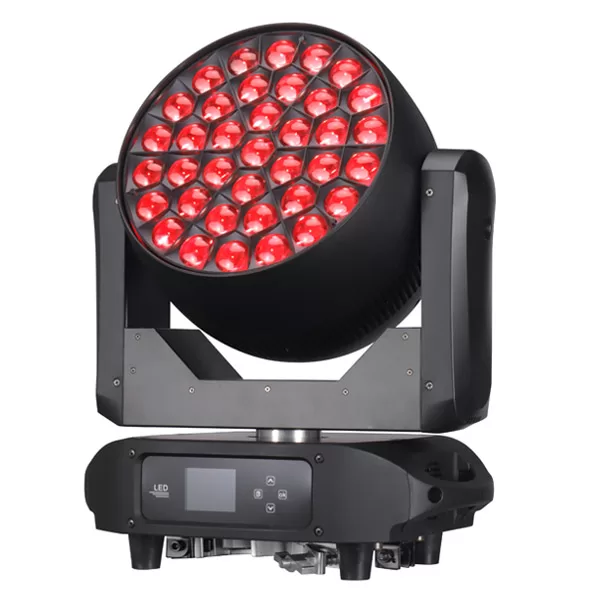
800w 37x40w RGBW Stage Moving Head Wash Light LW800
800W 37x40W LED RGBW Mulichips Moving Head Wash Lights with Zoom (5°-50°), Covering Large Range and Long Distance. Designed to deliver a 5°–50° ultra-large zoom range to achieve a greater wash effect, illuminating stages and events with stunning ring control lighting effects.
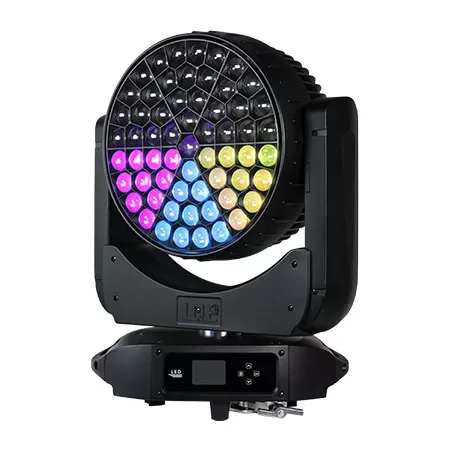
1000w 61x40w RGBW Stage Moving Head Wash Light LW1000
1000W 61x40W LED RGBW Mulichips Moving Head Wash Lights with Zoom (5°–50°), Covering Large Range and Long Distance. Designed to deliver a 5°–50° ultra-large zoom range to achieve a greater wash effect, illuminating stages and events with stunning lighting effects.

LED Moving Head Stage Wash Light LW200Z
The versatile moving head stage light provides a powerful lighting solution for theaters, concerts, and large outdoor performances. Suitable for theaters, TV stations, entertainment stages, and large outdoor performance scenes.

600w 19x40w RGBW Stage Moving Head Wash Light LW600 Zoom IP20
600W 19x40W LED RGBW Mulichips Moving Head Wash Lights with Zoom (5°–50°), Covering Large Range and Long Distance. IP20: Designed to deliver a 5°–50° ultra-large zoom range to achieve a greater wash effect, illuminating stages and events with stunning ring control lighting effects.

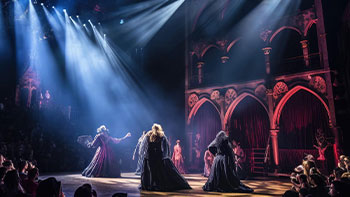
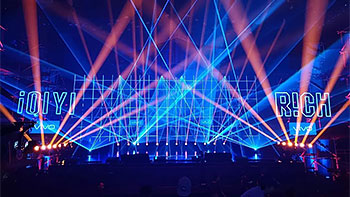

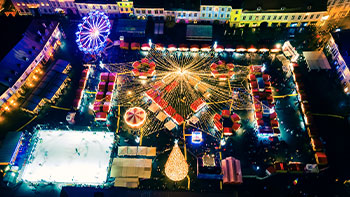








Linkedin
YouTube
Whatsapp: +8618924548390
TikTok